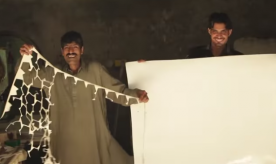Spillovers in technology adoption: Evidence from a randomised experiment in Pakistan
Spillovers between firms, and in particular technology spillovers, play a central role in many theories of economic growth. Such spillovers are thought to be a key mechanism generating increasing returns and they also provide the primary economic rationale for industrial policies to increase investment in innovation. In the presence of spillovers, such interventions may be needed to overcome coordination failures among firms and bring investment closer to socially optimal levels. In the absence of spillovers, such interventions are unnecessary and may generate distortions that may slow growth.
Despite the centrality of technology spillovers among industrial firms in theoretical and policy discussions of the growth process, the empirical evidence for their existence is weak. There are two key challenges that researchers confront when analyzing technology spillovers. First, researchers rarely have direct measures of firms’ technology use. Second, if one observes two firms adopting similar technologies, it is difficult to know whether the first firm is having an effect on the second, the second firm is having an effect on the first, or both are being affected by some unobserved factor. Teasing apart these effects requires detailed information on the network links between firms as well as, ideally, experimental variation in which firms initially adopt the technology.
Our research resolve both of these issues and provide rigorous, experimental evidence on the presence (or absence) of technology spillovers between manufacturing firms. The setting of the research is the soccer-ball sector in Sialkot, Pakistan, which manufactures 60 million hand-stitched soccer balls each year and accounts for about 70 percent of global production. Like many manufacturing sectors in low-income countries, the Sialkot soccer ball sector has been experiencing intense competitive pressures from producers in China and Vietnam and as such, technology upgrading is critical to sustain their international competitiveness.
We have designed a new cutting technology that enables firms to reduce the amount of raw materials required to produce a soccer ball. Our estimates suggest that the technology will save about 2% of the unit costs. We have randomly introduced this new technology to a group of treatment firms, and are measuring the extent to which this technology is adopted by non-treated firms that are connected to the treated firms. We will then explore connections through family relationships, supplier relationships, worker flows, and geographical proximity.





